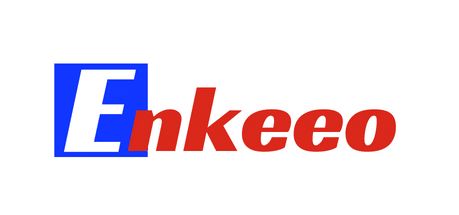How Can AI Assist in the Curation of Personalized Educational Content?

In the Information Age, new educational content is being created and distributed at an unprecedented rate. As you navigate through the vast sea of data, finding relevant and personalized content that suits your unique learning needs can be challenging. However, advances in Artificial Intelligence (AI) are revolutionizing the way educational content is curated. By analyzing user preferences and behaviors, AI algorithms can provide powerful tools for content curation, delivering a personalized and relevant learning experience. In this article, let’s delve into the role of AI in educational content curation, its underlying processes, and how it enhances learning outcomes.
AI-Powered Content Curation: A New Era of Learning
Content curation is no longer a human-only task. AI, with its machine learning algorithms, is playing an increasingly critical role in the process. AI-powered content curation tools sift through the massive amounts of educational data available, analyze it, and present the user with the most pertinent information based on their learning preferences.
Dans le meme genre : Unbox mystery toys: discover exciting surprises now
Such AI-enhanced content curation provides a personalized learning experience, enabling users to engage with material that aligns with their interests, abilities, and learning styles. This targeted approach to content curation ensures that learners receive exactly what they need when they need it, saving time, enhancing learning efficiency, and improving engagement.
The Role of Algorithms in Content Curation
Algorithms are the backbone of AI-powered content curation tools. These complex mathematical formulas analyze vast amounts of data to make predictions about user preferences, thereby driving the curation process.
A lire aussi : What Are the Prospects of AI in Customizing User Experience in Banking Apps?
For instance, if a user frequently engages with topics related to physics, the algorithm will recognize this pattern and prioritize physics-related content in their learning feed. Similarly, if the machine learning algorithm identifies that a user prefers video content over text, it will curate more video-based educational materials.
However, these algorithms are not static. They evolve with time, continually learning from user interactions. This continuous learning process ensures the recommendations remain relevant, even as user preferences change or new content becomes available.
The Human Element in AI-Powered Content Curation
Despite the capabilities of AI, the human element remains essential in the content curation process. While AI algorithms excel at analyzing data and identifying patterns, they lack the nuanced understanding and contextual awareness that human curators bring to the table.
Human curators can critically assess the quality and relevance of content, consider diverse perspectives, and interpret complex or ambiguous information. Additionally, they can provide a layer of empathy and emotional intelligence that an algorithm cannot replicate.
Therefore, the most effective AI-powered content curation tools incorporate a balance of machine and human input. The algorithms analyze and filter content, while human curators refine the selection to ensure it meets the users’ needs and preferences in a comprehensive, nuanced manner.
AI and the Future of Personalized Learning
The future of personalized learning looks bright, powered by AI. As AI algorithms become more sophisticated, they will be able to analyze more complex data patterns, leading to even more personalized content curation.
For instance, future AI tools might analyze a user’s learning pace, retention rates, or even emotional responses to content. This deeper level of personalization will allow for a truly individualized learning experience that not only caters to a learner’s preferences but also adapts to their unique learning journey.
Moreover, as AI technology continues to improve, it will become increasingly accessible to a broader range of users, democratizing personalized education and making it a reality for learners everywhere.
While this article discusses the role of AI in content curation, it’s crucial to remember that these are just tools to aid in the learning process. The ultimate responsibility for learning still rests with you, the learners. AI is simply a tool to help streamline the process and make it more effective. So, make the most of these technological advancements and let them guide you down the path of personalized learning.
The Intersection of AI and Social Media in Content Curation
Social media platforms are a treasure trove of data that can be harnessed to curate personalized educational content. AI uses machine learning algorithms to analyze vast amounts of user behaviors and interactions on social media, providing valuable insights into the type of content that users find interesting and engaging.
These AI-powered systems can track a user’s activity such as the posts they like, share, or comment on, the pages they follow, and the time they spend on different content. By understanding these patterns, the algorithms can predict the user’s preferences and deliver personalized content recommendations that align with their interests and learning needs.
Furthermore, AI’s predictive capabilities extend beyond content preferences to anticipate the optimal time to present content. For instance, if a user is most active on social media in the evenings, the AI might schedule educational content to appear in their feed at that time to increase the likelihood of engagement.
However, social media data can be noisy and unstructured, making it challenging to extract useful information. This is where AI’s capabilities in natural language processing come into play. AI can analyze textual data, such as comments and posts, discern sentiment, and identify trending topics, contributing to a more nuanced understanding of user preferences.
Therefore, the intersection of AI and social media holds immense potential for content curation, enabling more relevant, real-time content discovery that caters to the unique learning needs of each user.
The Role of Content Creators in the Age of AI
While AI has significantly transformed the content curation landscape, the role of content creators is as vital as ever. AI-powered content curation wouldn’t be possible without the wealth of educational content that creators produce.
Content creators develop material that caters to diverse learning needs and styles, from articles and podcasts to interactive quizzes and videos. They also bring a human touch to educational content, sharing personal insights, experiences, and storytelling elements that AI, despite its advanced capabilities, cannot replicate.
However, AI can assist content creators in their work. It provides insights into what content resonates most with learners, helping creators refine their content strategy. Furthermore, AI’s ability to analyze vast amounts of data allows it to identify gaps in existing content, providing creators with clues on what additional material might be needed.
In fact, AI can simplify the actual process of content creation. For instance, AI tools like automated grammar checkers, keyword suggestion tools, and content optimization software can streamline the writing process, enabling creators to produce high-quality content more efficiently.
Hence, in the age of AI, the role of content creators is evolving. They are no longer just creators but also strategists who leverage AI to deliver more personalized, relevant content to learners.
Conclusion
AI’s role in the curation of personalized educational content is undeniably transformative. Its ability to analyze vast amounts of data, draw accurate inferences about user behavior, and deliver personalized content recommendations represents a quantum leap in the way education is delivered. Coupled with the human touch of content curators and creators, AI-powered content curation promises a learning experience that is tailored, efficient, and engaging.
However, as with any tool, its effectiveness ultimately depends on how it’s used. Therefore, as learners, the onus is on us to utilize these tools to the fullest, engaging purposefully with the content, and taking charge of our learning journey.
In the future, as AI continues to evolve, we can expect even more sophisticated content curation, offering a truly personalized learning experience. However, let’s not forget that AI is simply a tool to enhance learning, and the real magic happens when learners interact with the content, apply their knowledge, and grow their understanding of the world. Indeed, the future of education is not just about artificial intelligence, but about intelligent use of the artificial.
We, at the cusp of this exciting new era of learning, look forward to seeing how AI, content curators, and learners work together to shape the future of education.
